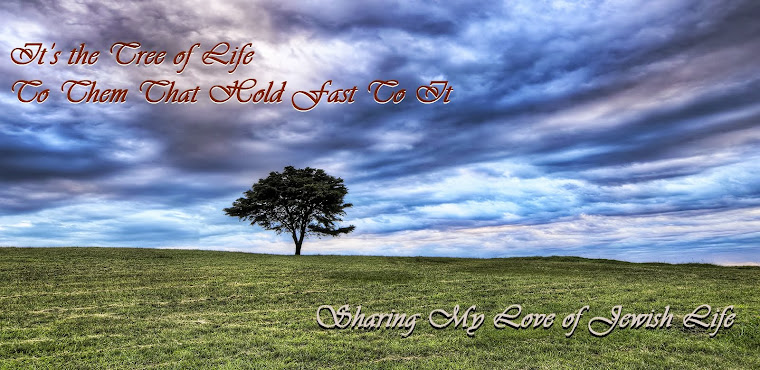This week’s parsha, Parshas Shemini, could be said, if one looks at it broadly, to about honest motivations. Torah Judaism puts tremendous importance on a person’s intention. Indeed, what one has in mind when doing an action can often be the difference between its being a mitzvah or not.
The last Perek (chapter) in this parsha talk about non-kosher and kosher
animals. It deliberately details 4 animals as being almost kosher, which, of
course, is not kosher at all. The camel, the hybex, and the hare are all noted
as chewing their cud but having feet that are falsely similar to split hooves.
The pig, on the other hand, is noted as having split hooves, but only appearing
to chew its cud. Chazal, the sages, speak of it as a deliberate attempt by the
animal to deceive one into thinking it is kosher – it is a deliberately false
intention. And as we all may have noticed, there are few animals as vilified
among the Jewish people as pigs (even if they are just as unkosher as any other
non-kosher animal).
The pig is a rather drastic example of the intention to deceive.
However, let’s be honest – almost all of us have either lacked intention or had
the wrong intention while doing a mitzvah, at least once in our lives. That
doesn’t mean we had a mean or negative intention, but we just didn’t have the
right intentions. Sometimes that is okay. Sometimes that leads to Sheh lo
lishma, bo lishma – that wasn’t for the sake of heaven, to being for the sake
of heaven. But sometimes, when it is really important, we need to really take
ourselves into account; we need to think through our actions before we rush
forward.
This is one of the lessons of Nadav and Abihu. They watched their father,
Aaron, perform the avodah perfectly, and they witnessed that “A fire went forth
from before Hashem and consumed” the offering. It was a moment of sheer awe. Indeed,
the entire people shouted and fell on their faces (Vayikra 9:24). The very next
pasuk, 10:1, then describes the actions of Nadav and Abihu performing the
service themselves and being consumed by flame.
Imagine what this must have looked like for Klal Yisrael. These young
kohanim jump up to perform a service and are struck down. Their actions looked
kosher, but they weren’t.
The are a multitude of commentaries about what they did that caused them
to be punished so drastically. There are those that say that they were drunk,
based on the commandment not to drink when performing the avodah that is
written later in the parsha. There are those that say that their rash action
was the result of arrogance, of a sense that they were equally important as
their father. Or perhaps it was the zealousness of youth. These commentaries
all speak to an underlying error in intention. They performed the ritual
correctly, although they had not been instructed to do so, but their intentions
were more selfishly motivated.
On the other hand, there are commentaries that speak of Nadav and Abihu’s
good intentions. One could see how these youths brought their offering out of
overwhelming love for Hashem. They have just witnessed the success of the
inauguration of the Mishkan, the culmination of what the klal had been working
toward. They had just gotten a direct and positive response from Hashem. If
this, they might have thought, is what Hashem wants, then we shall give Him more.
The intention, in that case, was beautiful, and yet it was still wrong
because it was lacking a fundamental understanding that living by Hashem’s
Torah means we don’t act purely on impulse. The emotion of love, even love for
Hashem, is tempered by yira, fear in the sense of the awe of knowing that this
world has a right way and a wrong way.
The Torah requires us to live our lives under specific rules and guidelines,
and as beautiful as the love is, it isn’t enough. Two people cannot always
marry just because they love each other, for instance a kohain and a divorcee. There
are rules. There are limitations. And they are in place to bring order to the
world. The emotion of love can be overwhelming, but as beautiful as that is,
the euphoric feelings of doing something good at that moment are a false front.
Many of us grew up surrounded by a society that presented an underlying
message that if one just lives a good life, that’s enough. And there are many,
many people who love God powerfully and who strive to be the best person that
they can be because of that emotion, but it lacks a framework. This is one of
the messages we learn during Pesach, when we contemplate leaving slavery in
Mitzrayim to go out and become avdei Hashem, servants of Hashem.
Living our own definition of being a good person, defining our
relationships with Hashem based on our inner emotions, or jumping into mitzvos
out of Ahava when they aren’t our mitzvos to do, are all false fronts. A “kosher”
life, so to speak, is a life that is filled with Ahavas Hashem that is guided
by Yira, by awe. That sense of yira is what reminds us that the halachos hand
down from Sinai were given to us because only Hashem understands the true
innerworking of the world and following His ways is actually the ultimate
expression of Ahavas Hashem.
